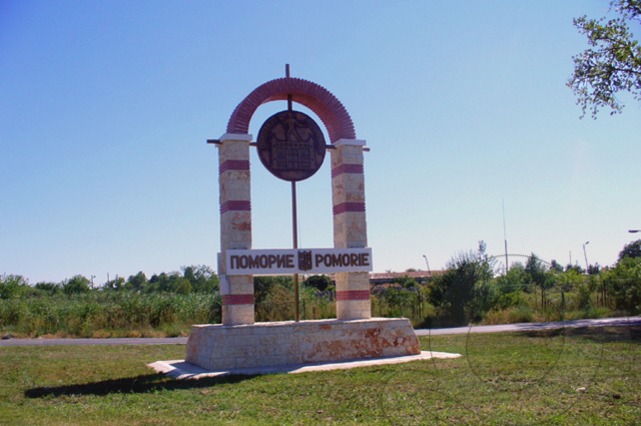One of the oldest towns in Bulgaria is called Pomorie. The town is located on a rocky peninsula on the road between the coastal city of Bourgas and the resort of Sunny Beach.
Pomorie came in existence in the 5th century BC under the name of Anhialo. Initially it served as a Greek colony of Sozopol. According to historians the name means ‘place close to a salty lake.’ Others believe it means ‘place close to water.’ The second version gave birth to the current name of the town in 1934.
Over the centuries Anhialo acted as one of the major Black Sea coastal cities. Its rival for this central position was the Greek colony of Mesambria (current day Nessebar), also located in the region.
During the Roman period, Anhialo prospered the most. After the Roman Empire accepted Christianity as its religion, the town became a religious center and started minting its own coins.
Locals got involved in salt production, fishery, wine-making and commerce. Anhialo’s wine was of good quality. The traditions were passed over the centuries and today Pomorie is a place that produces some of Bulgaria’s finest wines.
During the Middle Ages warriors from Bulgaria and the Byzantine Empire fought fiercely for control over Anhialo.
The town became part of Bulgaria during the time of khan Kroum. Bulgarians and Slavs settled there. They tried to rename the town to Touthon, but the name remained unpopular.
Anhialo often changed its state belonging. The river of Aheloi, located nearby, witnessed a historic battle between the troops of the Bulgarian king Simeon the Great and the Byzantine emperor Lion Foka. Bulgarians ended the battle in victory, while the Byzantine emperor barely survived.
The Ottoman rule over Bulgarian territories saw the town as a major trade and culture center. Apart from wine and salt production, Pomorie became well known for its thermal springs. One legend describes how the Ottoman ruler Selim Bey settled there in the 18th century. He suffered from incurable disease that was slowly killing him.
One of the ruler’s servants, Neno, had a dream one night. In the dream, the servant saw St. George and a spring, both appearing in the yard of Selim Bey’s farm. Neno decided to find the spring that he saw in the dream.
The servant started digging in the yard. He found a stone plate carrying St. George’s image. Once the plate was moved, water poured out of the hole. Selim Bey believed Neno’s story and called for the local priest, who sanctified the spring. Once sprinkled with the water, Selim Bey was cured.
Selim Bey turned to Christianity upon his recovery. He constructed a chapel, later on became a monk and donated his property. A monastery was constructed there under the name of Pomorie Monastery St. George.
Once Bulgaria regained its freedom in 1878, Anhialo lost its status of an important trade center because of the growth of Bourgas.
The name of Pomorie was introduced in 1934. This was when the town started developing as a tourism center. Many visitors from Bulgaria and abroad visited it to benefit from the healing power of the springs.
Today Pomorie is still one of the major spa centers in the country.
Pomorie’s shoreline features some good beaches. A number of protected areas are located close to the town. Among these are Blatno Kokiche, Koriata and Pomorie’s lake, used for salt production.
St. George Monastery, a church, a Thracian tomb and the architecture preserve Old Houses of Pomorie are some of the other must-sees in the region.
A unique salt museum is also located in Pomorie. The municipal history museum has a big collection of over 2500 artifacts.

